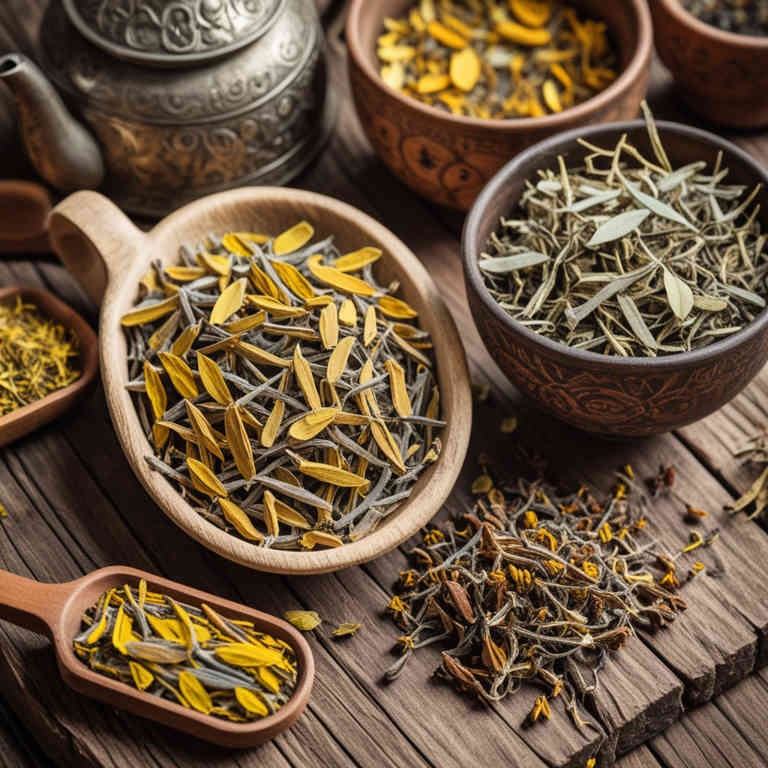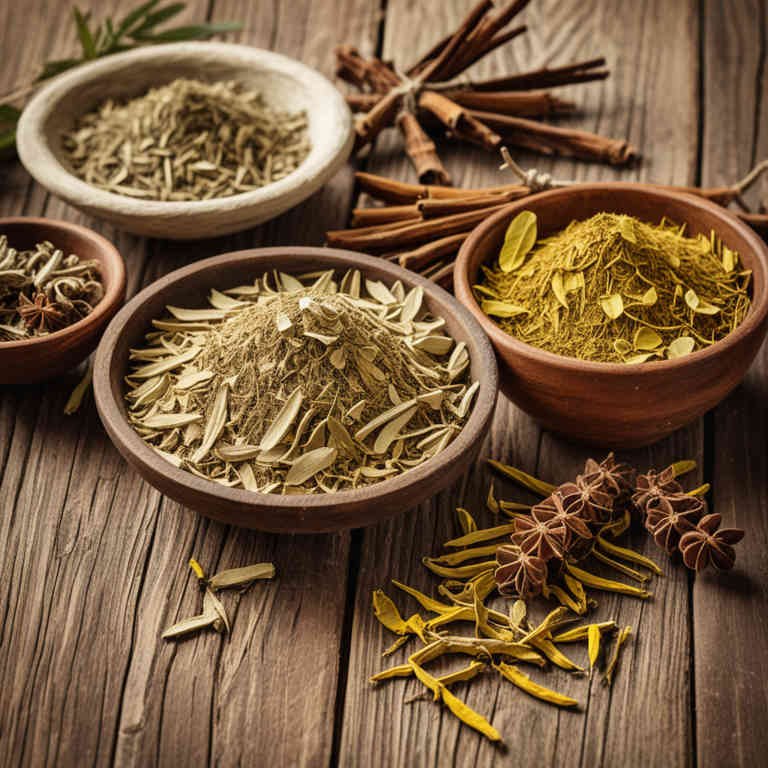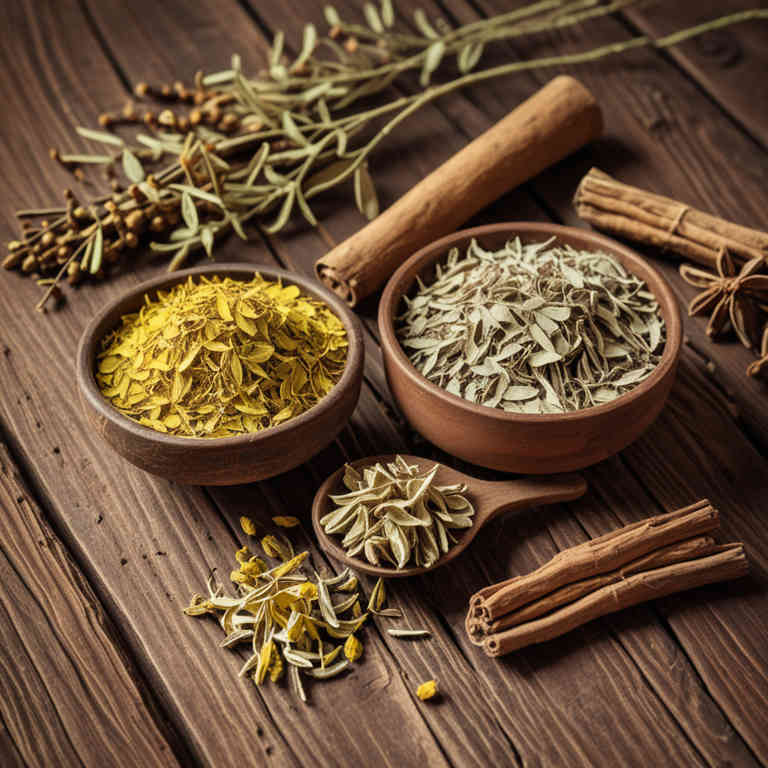10 Best Cassia Alata Preparations

The best medicinal preparations of Cassia alata are teas, decoctions, poultices, tinctures, and capsules, each offering unique benefits for various health conditions.
Teas made from the dried leaves are commonly used to support digestion and reduce inflammation.
Decoctions involve boiling the bark or roots to extract potent compounds for treating ailments like fever and skin infections.
Poultices, created by crushing fresh leaves, are applied topically to soothe wounds and relieve pain.
Tinctures provide a concentrated form of the herb, often used for its antimicrobial and antioxidant properties.
Capsules offer a convenient way to consume Cassia alata for its potential to support immune function and metabolic health.
Below there's a list of the 10 best herbal preparations of cassia alata for medicinal purposes.
- 1. Teas
- 2. Decoctions
- 3. Poultices
- 4. Tinctures
- 5. Capsules
- 6. Oils
- 7. Creams
- 8. Mucillages
- 9. Lozenges
- 10. Oinments
1. Teas
Cassia alata teas is commonly used to treat digestive issues, skin conditions, and inflammatory disorders.
The most common medicinal uses of this herbal preparation include alleviating symptoms of diarrhea, reducing inflammation in the skin, and managing fever. It is also used for its antiseptic and astringent properties to treat wounds and infections. The bioactive constituents responsible for its medicinal properties include flavonoids, tannins, alkaloids, and saponins, which exhibit antimicrobial, anti-inflammatory, and astringent effects.
These compounds contribute to its wide range of therapeutic applications in traditional medicine.

2. Decoctions
Cassia alata decoctions is commonly used to treat a variety of ailments, including digestive issues, skin conditions, and inflammatory disorders.
This herbal preparation is widely utilized in traditional medicine for its purported ability to reduce inflammation, alleviate pain, and support gastrointestinal health. Common medicinal uses include the treatment of diarrhea, ulcers, and skin infections such as eczema and psoriasis. The bioactive constituents responsible for these effects include flavonoids, tannins, and alkaloids, which exhibit anti-inflammatory, antimicrobial, and astringent properties.
These compounds contribute to the plant's effectiveness in addressing a range of health conditions.

3. Poultices
Cassia alata poultices is commonly used to treat skin conditions, inflammation, and infections.
The poultices are often applied topically to reduce pain, swelling, and redness associated with wounds, eczema, and other dermatological issues. They are also used for their antifungal and antibacterial properties to address fungal infections and bacterial skin disorders. The bioactive constituents responsible for these effects include flavonoids, tannins, saponins, and alkaloids, which possess anti-inflammatory, antimicrobial, and astringent properties.
These compounds work synergistically to promote healing and provide relief from various ailments.

4. Tinctures
Cassia alata tinctures is commonly used to treat a variety of ailments, including digestive issues, skin conditions, and respiratory infections.
These preparations are often employed for their anti-inflammatory, antimicrobial, and antidiarrheal properties. The most common medicinal uses include alleviating symptoms of dysentery, reducing inflammation in skin conditions like eczema, and supporting digestive health. Bioactive constituents such as flavonoids, saponins, and tannins contribute to its therapeutic effects.
These compounds work synergistically to provide the plant's broad range of medicinal benefits.

5. Capsules
Cassia alata capsules is commonly used to treat digestive issues, inflammation, and skin conditions due to its traditional medicinal properties.
The most common ailments treated with this preparation include indigestion, gastrointestinal disorders, and inflammatory conditions such as arthritis. It is also used for its antimicrobial and antioxidant effects to support immune health. The bioactive constituents responsible for its medicinal properties include flavonoids, saponins, alkaloids, and tannins, which contribute to its anti-inflammatory, antimicrobial, and antidiarrheal effects.
These compounds work synergistically to provide the therapeutic benefits associated with Cassia alata capsules.

6. Oils
Cassia alata oils is commonly used to treat skin conditions, digestive issues, and inflammatory disorders.
The oil is often applied topically for its antiseptic and anti-inflammatory properties, and it is also ingested in small quantities to alleviate stomach discomfort and promote digestion. Common ailments addressed include acne, eczema, and gastrointestinal distress. The bioactive constituents responsible for these effects include flavonoids, tannins, and essential oils such as cineol and limonene.
These compounds contribute to the oil's antimicrobial, antioxidant, and anti-inflammatory activities.

7. Creams
Cassia alata creams is commonly used to treat skin conditions and inflammatory disorders due to its anti-inflammatory and antimicrobial properties.
The most common medicinal uses of this herbal preparation include the treatment of eczema, psoriasis, fungal infections, and wounds. It is also used to alleviate symptoms of arthritis and other inflammatory diseases. The bioactive constituents responsible for these medicinal effects include flavonoids, tannins, saponins, and alkaloids, which possess antioxidant, anti-inflammatory, and antimicrobial activities.
These compounds work synergistically to provide therapeutic benefits for various ailments.

8. Mucillages
Cassia alata mucillages is commonly used to treat gastrointestinal disorders, inflammation, and skin conditions due to its soothing and healing properties.
The mucillages are often applied topically to wounds, burns, and ulcers to promote tissue regeneration and reduce inflammation. Internally, they are used to alleviate symptoms of diarrhea, dysentery, and other digestive tract irritations. The medicinal effects are attributed to bioactive constituents such as polysaccharides, flavonoids, tannins, and alkaloids, which exhibit antimicrobial, anti-inflammatory, and antioxidant activities.
These compounds work synergistically to support the body's natural healing processes and provide relief from various ailments.

9. Lozenges
Cassia alata lozenges is commonly used to treat respiratory and oral health issues, such as sore throat, cough, and inflammation.
These lozenges are often prepared from the leaves and bark of the cassia alata plant, which are known for their anti-inflammatory and antimicrobial properties. The most common medicinal uses include alleviating symptoms of colds, flu, and other respiratory infections, as well as reducing gum and tooth pain. The bioactive constituents responsible for these effects include flavonoids, tannins, saponins, and alkaloids, which exhibit antimicrobial, anti-inflammatory, and antioxidant activities.
These compounds help reduce inflammation, combat infections, and soothe irritated tissues in the mouth and throat.

10. Oinments
Cassia alata oinments is commonly used to treat skin conditions, inflammation, and infections due to its antiseptic and anti-inflammatory properties.
The most common medicinal uses include the treatment of wounds, eczema, psoriasis, and fungal infections. It is also used to alleviate symptoms of arthritis and other inflammatory disorders. The bioactive constituents responsible for these effects include flavonoids, tannins, saponins, and alkaloids, which exhibit antimicrobial, anti-inflammatory, and analgesic activities.
These compounds work synergistically to provide the therapeutic benefits associated with Cassia alata oinments.
